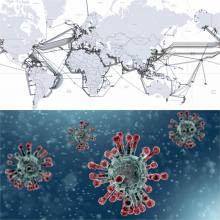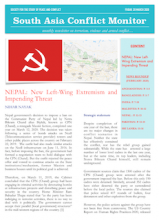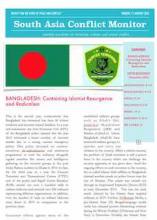-

Coronavirus disease 2019 (COVID-19) is not the first disease suspected to be a bioweapon in recent times. Post 9/11 Anthrax attacks in the United States, which ended up killing five people and was an act of intentional use of anthrax spores, any subsequent disease spread gets normally suspected as a human creation. Particularly, since the Coronavirus had its origins in a country like China, the ‘conspiracy theory’ that this virus is a bioweapon has many takers. The State of China has an ‘image’ issue, for long.
-

Seventeen security personnel, including 12 from the District Reserve Guard (DRG) and five from the Special Task Force (STF), were killed by the CPI (Maoist) in Chintagufa in the Sukma district of Chhattisgarh on March 21, 2020 (Hindustan Times, March 22). The ambush was reportedly planned and executed by Madvi Hidma, who has been heading the battalion, one of the People’s Liberation Guerilla Army (PLGA) in Sukma for more than two and a half years.
-

The Internet has become a lifeline for the world for the past few decades. At present, owing to the Covid-19 threat, the world is observing ‘social distancing’. However, at the same time, there has been a major increase in ‘digital closeness’. For all these years, the idea of ‘work from home’ had very limited relevance, but now all of a sudden, this is becoming a global reality. Unfortunately, this is also leading to the overcrowding of digital networks due to rapid traffic growth.
-

Nepal government’s decision to impose a ban on the Communist Party of Nepal led by Netra Bikram Chand alias Biplab, known as CPN (Chand), a renegade Maoist faction, completed one year on March 12, 2020. The decision was taken following a series of bomb attacks on Ncell (Telecommunication service provider) towers and other public places across the country on February 22, 2019. The outfit had also made similar attacks on the Ncell infrastructure on June 11, 2016. In fact, before imposing the ban, the government had formed a negotiation team to hold dialogue with the CPN (Chand).
-

The growing incidents of radicalisation and religious extremism in a liberal Muslim country like the Maldives is alarming. It is a grave threat to the country as well as the South Asian region. Since the late 1970s, Maldives has seen growing trends of religious intolerance. Wahabi ideologies influenced many Maldivians in the subsequent years to fight for global Jihad. Today, the issue of radicalisation and violent extremism has emerged as a potential national security threat.
-

India-US relations share a long history and has seen upd and downs. Prime Minister Jawaharlal Nehru visited the US during 1949. This trip preceded India’s formal declaration of neutrality in global affairs. It was a clear statement of intent from India that it is not keen to join either the Soviet or the US camp during the Cold War. Over the years, Indo-US relationship has evolved, though it has been a very bumpy ride.
-

On February 15, 2020, the Supreme Court of India made a landmark verdict on civil suit ‘The Secretary, Ministry of Defence versus Babita Punia and Others’ (civil appeals nos. 9367-9369 of 2011 read along with nos. 1127-1128 of 2013 and no. 1210 of 2020) by allowing permanent commission status to women officers in the Indian armed forces and making them eligible for command positions (which enables them now to perform all types of military roles – full combat, combat support and services). The government has been granted a three-month period to implement the ruling.
-

This is the second year, consecutively that Bangladesh has witnessed less than 50 violent incidents and terrorist-related fatalities. In a year-end assessment, the Anti-Terrorism Unit (ATU) of the Bangladesh police claimed that the year 2019 witnessed a lesser number of terrorist attacks due to a strong counter-insurgency policy. This policy focussed on counter-narratives, de-radicalization and awareness programmes to curb the militancy alongside regular activities like arrests and intelligence gathering on the terrorist groups in the post Holey Bakery incident in Dhaka in 2016.
-

In 1991, Ms. Aung San Suu Kyi was awarded the Nobel Peace Prize for her campaign for democracy in Myanmar. Twenty years down, on 11th December 2019, the same Nobel laureate defended the oppressive regime of Myanmar at the ICJ, Hague, for the charges of carrying out genocide against the Rohingya Muslim minority. Responding to Gambia’s charges presented by Justice Minister and Attorney General, Abubacarr Marie Tambadou, Ms. Aung San Suu Kyi defended the actions of her country against the Rohingyas.
-

There are three characters to this story. One is Vikram, the other is Vetal (the Revenant) and the third is ISRO. Vetal is a mythological character that is associated with the evil spirit. As per the original story, it is Vikram who tries to capture the Vetal who in turn tells a story to Vikram that ends with a riddle. However, in this story, the onus is on ISRO to give the correct answer to the riddle, which is about the status of Vikram on the surface of the moon. Here Vetal is the fear of ISRO to accept failures upfront.
Paxton ported to drupal by DropThemes.in